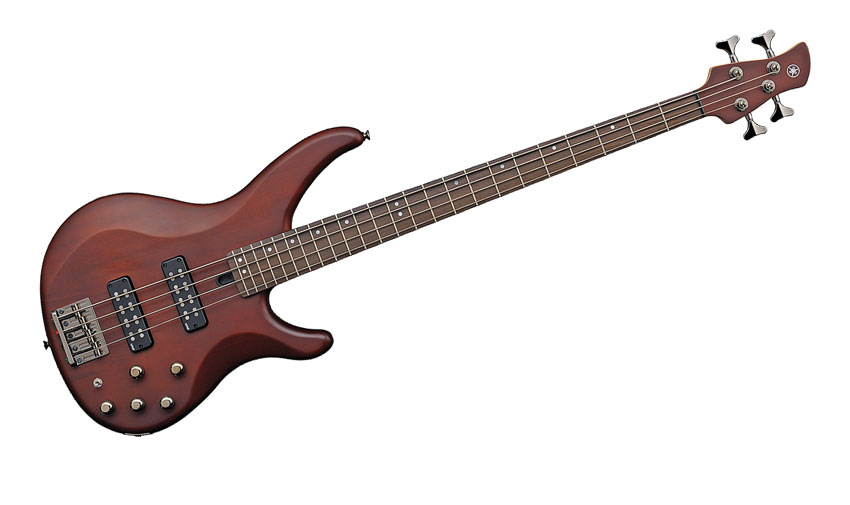MusicRadar Verdict
Yamaha's latest bass takes some beating; great playability and a broad range of passive and active sounds.
Pros
- +
H5 pickups. Well-made. Versatile.
Cons
- -
Not much.
MusicRadar's got your back
Yamaha's reputation for making great basses continues with the TRBX504. Another well-crafted instrument, it makes use of a solid mahogany body with significant chamfering to the top, which aids both playing comfort and weight. The five-piece maple/ mahogany laminate neck is ultra-smooth to the touch and has Jazz-like proportions with a slim 38mm nut and offset pearl dot inlays.
"A high-mass raised tail unit and offers maximum natural sound transference from the strings to the body"
The body design is typically Yamaha, meaning excellent balance and access to those uppermost frets. While the burnished chrome bridge/ tailpiece allows for top loading of strings only, it's a high-mass raised tail unit and offers maximum natural sound transference from the strings to the body.
With a pair of quad-polepiece pickups and an active/passive preamp design with a battery of controls, it will come as no surprise that the prime function of the TRBX504 is to produce an array of quality tones.
Sounds
The H5 pickups are stunning. In passive mode they offer a range of gloriously funky sounds and when switching to active mode the potential is neatly doubled. With the tone controls set flat there is little variation when switching from passive to active, but in active mode they really come alive and offer both cut and boost.
For dynamic attack and punch use the active setting, while the passive mode provides those fruity and warm traditional bass sounds and pickup blends.
This is a tactile and versatile bass with a host of sumptuous sweet spots. Versatile, full of delightful tonal surprises and all at a price that won't break the bank - what's not to like about this fine addition to Yamaha's bass range?
Want all the hottest music and gear news, reviews, deals, features and more, direct to your inbox? Sign up here.
